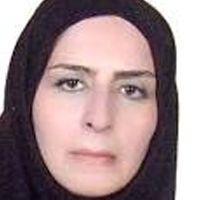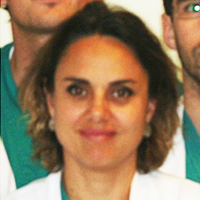Effects of Physical Therapy in The Postoperative Period of Plastic Surgery: An Integrative Review
Published on: 21st June, 2024
Introduction: The practice of plastic surgery began in the field of reconstructive surgery, in an attempt to recover the functionality of some area of the body or give it a more natural appearance. In this sense, the role of the physical therapist is recommended in various aesthetic surgeries that, through physical therapy resources and techniques, promote tissue healing, reduce the appearance of adhesions, and reduce or eliminate pain, bruises, and edema. Objective: to identify the effects of physical therapy in the postoperative period of plastic surgery. Methodology: This is an integrative literature review, in which there will be a review of articles related to the study of the effects of physical therapy assistance applied to the postoperative period of plastic surgery. Articles related to the proposed theme were included, published between 2011 and 2024, available in full, without language restriction; in addition to theses, dissertations, and monographs. Exclusion criteria were literature review articles, articles or abstracts that had been published in conference proceedings; as well as letters from editors and preprints. Results and discussions: it can show that physiotherapy in the postoperative period of plastic surgery is essential in reducing recovery time, reducing edema, improving the healing process, and preventing the risk of complications in the postoperative period. The main physiotherapeutic resources and techniques were: lymphatic drainage, ultrasound, radiofrequency, laser, and high frequency. Regarding plastic surgeries, the most frequent in the literature were: abdominoplasty, blepharoplasty, rhytidectomy, and liposuction. Final considerations: Dermatofunctional physiotherapy is of paramount importance in the postoperative period of plastic surgery. It is essential in reducing recovery time and reducing the risks arising from surgery.
Descriptive Study of the Urinary Tract Infections in Patients Admitted in the Cardiology Ward of Afghan Momand Medical Complex
Published on: 28th June, 2024
Urinary Tract Infection (UTI) is very common in our community most specifically in married females with numerous antecedent risk factors. The aim of the study was to find out about the current risk factors and clinical profile of urinary tract infections in patients admitted to the cardiology ward of Afghan Momand Medical Complex for various purposes.It was a cross-sectional descriptive hospital-based study including both male and female patients visiting the Afghan Momand Medical Complex from January 2022 to June 2022. Of all 960 patients, 202 (21%) patients had urinary tract infections with gender distribution as 69 (34.2%) males and 133 (65.8%) females. In fact, 33 (16.3%) patients with urinary tract infections were single while the rest 169 (83.7%) patients were married. In addition, regarding clinical profile, the following clinic was respectively more prevalent: Dysuria in 120 (59.4%) patients, flank pain in 73 (36.1%) patients, urine frequency in 67 (33.1%) patients, urgency in 36 (17.8%) patients, fever in 24 (11.8%) patients, and nausea and vomiting in 19 (9.4%) patients. Moreover, the following risk factors were respectively the most common ones: Diabetes mellitus 86 (42.5%), pregnancy 30 (14.9%), stones 15 (7.4%), 10 (4.9%) devices, 10 (4.9%) prostatic hyperplasia, and 4 (2%) anatomical anomalies.Urinary tract infection is a common disease in the admitted patients in Afghan Momand Medical Complex specifically being more common in females and early 20s of the age. In fact, diabetes, pregnancy, and kidney stones were the leading associated factors with UTI. Moreover, dysuria, bladder emptying irritative symptoms, and abdominal pain were the most prevalent clinical profile of the patients. Special attention should be paid to infectious diseases in cardiac patients since infection itself is a stress and a threat to such patients and authorities should design special measures to prevent UTI in the general population to avoid a sum of burden on the health system.
Enhancing Physiotherapy Outcomes with Photobiomodulation: A Comprehensive Review
Published on: 23rd July, 2024
Physiotherapy treatments employ complex approaches tailored to the patient’s diagnosis. Exercise is the primary strategy to enhance rehabilitation processes for most individuals. However, electrophysical agents, such as Photobiomodulation (PBM), that utilize specific wavelengths of light to penetrate tissues and stimulate cellular activity, can modulate various biological processes and may improve physiotherapy outcomes. This non-invasive treatment can reduce pain and inflammation, promote tissue repair, and accelerate tissue healing. Currently, PBM has numerous applications, including pain and inflammation treatment, wound healing (such as diabetic foot ulcers, pressure ulcers, post-surgery wounds, and skin grafts in burn injuries), and the management of musculoskeletal disorders (such as arthritis, tendinopathies, muscle injuries, and spinal disorders). It is also utilized to improve muscle performance and recovery in rehabilitation and sports. Additionally, transcranial PBM has shown promise in enhancing neurorehabilitative processes by facilitating the recovery of cognitive and motor functions in various types of lesions. The safety and efficacy of this treatment allow it to be incorporated alongside regular exercises and manual therapies as an adjunctive treatment, potentially enhancing outcomes in different areas of rehabilitation.
Extracorporeal Shock Wave Combined with Traditional Chinese Medicine Bone-setting Manipulation for External Humeral Epicondylitis: A Randomized Clinical Trial
Published on: 23rd July, 2024
Objective: The purpose of this study was to evaluate the clinical efficacy of extracorporeal shock waves combined with traditional Chinese medicine bone-setting manipulation for external humeral epicondylitis. Methods: Ninety-two patients with external humeral epicondylitis were randomly divided into an observation group and a control group. Patients in the control group were treated with extracorporeal shock waves while those in the observation group with traditional Chinese medicine bone-setting manipulation based on the control group. Patients in both groups were evaluated by the Visual Analogue Scale (VAS), Mayo Elbow Performance Score (MEPS), and Disabilities of the Arm, Shoulder, and Hand Questionnaire (DASH) before and after treatment. The inflammatory factors such as IL-6, IL-10, TNF-ɑ, and clinical outcomes were contrasted before and after treatment. Results: There were statistically significant differences in VAS score, MEPS score, and DASH score between the two groups before and after treatment (p < 0.05). The observation group exhibited a more pronounced improvement in each score compared to the control group. Post-treatment, the inflammatory factors of both groups were significantly lower than pre-treatment levels (p < 0.05), with the observation group showing a more noticeable decrease. The overall effectiveness of the observation group was higher than that of the control group, and the difference was statistically significant (p < 0.05).Conclusion: The combination of extracorporeal shock wave therapy and traditional Chinese medicine bone-setting manipulation can effectively alleviate pain symptoms and improve dysfunction caused by external humeral epicondylitis, while also reducing inflammatory factor expression. This combined treatment may prove more effective than extracorporeal shock wave therapy alone.Clinical Trial: Registration: ChiCTR2200066075.
Imaging Challenge in Recurrent Spontaneous Coronary Artery Dissection (SCAD): A Case Report
Published on: 8th August, 2024
Spontaneous Coronary Artery Dissection (SCAD) represents a significant cause of acute coronary syndrome (ACS) in patient populations with low-risk cardiovascular profiles and, therefore can be sometimes underdiagnosed. On the other hand, it often preserves the typical clinical presentation of ACS which makes coronary artery angiography (CAG) execution mandatory. A 62-year-old woman with a history of recurrent SCAD presented to the emergency department for a new episode of acute chest pain with troponin elevation. CAG revealed an ambiguous angiography image suggesting a sub-occlusive type 2 SCAD involving the distal segment of the left circumflex artery. The patient was managed conservatively due to the absence of ongoing ischemia or hemodynamic instability. At the seven-day follow-up, a computed tomography coronary angiography (CTCA) was performed to better assess SCAD and detect concomitant associated arteriopathies. Optimized medical therapy was prescribed at the discharge and at one-month follow-up, no recurrence of symptoms was referred.
Awareness of Myocardial Infarction in Nangarhar Residents: A Community Based Study
Published on: 27th August, 2024
Myocardial infarction is the leading cause of morbidity and mortality worldwide. The overall aim of the study was to evaluate community awareness about myocardial infarction.It was a community-based cross-sectional study conducted during one month including both male and female participants aged 18 years and over in Nangarhar province of Afghanistan. The percentage of awareness for risk factors was as follows: Diabetes (56.4%), Hypertension (43.4%), Elderly (42.1%), Obesity (39.8%), Physical inactivity (38.5%), Hyperlipidemia (37.6%), and Family history (33.8%). Furthermore, knowledge about symptoms and signs was as the following: chest pain (67.4%), pain in neck and jaw (57.8%), Dyspnea (50.7%), pain in arms (46.1%), weakness/fainting (40.1%), cold sweats (38.2%), nausea and vomiting (34.5%), anxiety (29.6%), fever (22.7%), hypotension/shock (20.1%), and silent myocardial infarction (11.3%). Moreover, 24% of participants did not know about the prevention strategies for myocardial infarction. Regarding treatment, 80.3% of participants exactly knew to go to the emergency room, 11.9% of participants would intend to go to a general practitioner (GP), 5.6% of participants would ask others for advice on what to do, and 2.2% of participants would wait to see if the symptoms go away spontaneously or if the symptoms were due to other diseases. The current awareness level about myocardial infarction especially atypical symptoms, risk factors, prevention, and treatment strategies in Nangarhar residents was insufficient, especially in females and healthy individuals, and warrants designing and implementing immediate awareness programs in order to avoid delay of treatment-seeking, misbeliefs about the disease and subsequent morbidity and mortality.
Rapid Upper Limb Assessment (RULA) and Rodgers Muscle Fatigue Analysis (RMFA) of Dentists using Optical Microscope, Loupes, or No Magnification during Endodontic Access: A Pilot Study
Published on: 29th August, 2024
Dentistry is a challenging and demanding physical profession, and this impacts not only the quality of the task outcomes but also the professional’s quality of life. The nature of dentistry demands prolonged static and awkward seated postures, frequent motions, positioning struggles, and working distances to the oral cavity for strategic procedure management, which become cumulative challenges over the working days, prone to discomfort, pain, or injuries, and musculoskeletal disorders for the operator.The limitations of the naked eye in dentistry, particularly in terms of visual information and resolution, underscore the need for visual aids. These aids are crucial for achieving the precision required for accurate procedures. Also, visual aids, such as magnifying loupes and the operative microscope, have been in the market for a while, and their proper use has shown ergonomic benefits that promote a neutral working posture and changes in work practice-oriented to control unbalanced awkward posture and motions.In this study, the Rapid Upper Limb Assessment RULA compares the posture between naked-eye dentistry, conventional loupes, and operative microscope, and with the observational assessment, determine the risk of developing musculoskeletal disorders and the need for priority of change. The Rodgers muscle fatigue analysis RMFA is used to predict fatigue in the muscular regions of the body during specific dental tasks.
Comparison of Trigger Point Lidocaine Injection and Stabilization Splint Use in Myofascial Orofacial Pain Treatment
Published on: 20th September, 2024
Objective: This study aims to compare the short-, medium-, and long-term efficacy of trigger point local anesthetic injection and stabilization splint use for myofascial orofacial pain.Materials and methods: Group 1 comprised 15 patients who received trigger point local anesthetic injections (LAI), while Group 2 comprised 15 patients who were treated with a stabilization splint (SS). Analysis of pain-free maximum mouth opening (MMO) measurements, jaw disability checklists (JDC), short-form McGill pain questionnaires (SF-MPQ), and Visual analog scales (VAS) were used for comparison between the groups.Results: The LAI group showed a significantly greater increase in pain-free MMO in all terms (p < 0.001) and had significantly lower values on the JDC in both the medium (p = 0.026) and the long term (p = 0.006). The SF-MPQ was significantly lower in the medium term (p = 0.001) in the LAI group; the VAS showed a significantly greater decrease in the short (p = 0.016) and medium terms (p < 0.001) in the LAI group.Conclusion: The results indicate that a treatment choice can be made between TN lidocaine injection and occlusal splint based on patient tolerance.
Neurovascular Shifts, Sensory Sensitivity, and PMDD in Autistic Women: Exploring Blood Flow Redirection, Mood Dysregulation, and Pain Tolerance during Menstruation
Published on: 30th September, 2024
This article examines the relationship between Premenstrual Dysphoric Disorder (PMDD), neurovascular dynamics, and sensory sensitivities in autistic women during menstruation. The redirection of blood flow to the uterus during the menstrual cycle has been found to exacerbate cerebral perfusion deficits in neurodivergent individuals, particularly in the Prefrontal Cortex (PFC), which contributes to the mood dysregulation and emotional instability characteristic of PMDD. Autistic women, who often exhibit heightened sensory sensitivities, experience intensified discomfort during menstruation, as sensory overload and altered pain perception compound the emotional challenges of PMDD. These findings emphasize the need for neurodivergent-friendly menstrual products that mitigate both physical and emotional discomfort. Additionally, innovations using biodegradable materials, smart fabrics, and custom-fit menstrual solutions are discussed as potential breakthroughs to improve the quality of life for autistic women managing PMDD. This research highlights the importance of addressing both neurobiological and sensory aspects when designing interventions for PMDD in neurodivergent populations.
A Rare Case of Uvulitis Following Endotracheal Intubation Using C- Mac Videolaryngoscope and How To Avoid It
Published on: 1st October, 2024
Uvular injuries are uncommon after general anesthesia and can result from direct trauma to the posterior part of the soft palate or compression and restriction of blood flow to the uvula caused by the inadvertent placement of the airway or suction devices in the oral cavity. There have been cases of inflammation and ulceration occurring in the midline oropharyngeal structures such as the uvula after general anesthesia with a tube or laryngeal mask airway, even in the absence of direct trauma or infection, presumably due to compression ischemia. While sore throat following general anesthesia is a common symptom, it is important to evaluate any severe or persistent pain to exclude uvulitis. Here we present a case of uvulitis that developed after the insertion of a flexometallic endotracheal tube using the midline technique during C-Mac video laryngoscopy. We also emphasize the measures that can be implemented to prevent such a complication. The entrapment of the uvula during intubation often goes unnoticed due to limited oral space after insertion of the video laryngoscope blade, with the intubating anesthetist staying focused on the monitor. This complication following the use of a C-Mac video laryngoscope has not been previously documented.
Pseudocalcinosis Tumorale (Teutschlander Disease) in Chronic Hemodialysis Patients
Published on: 24th October, 2024
Pseudotumoral calcinosis (CPT) is a condition characterized by the deposition of calcium phosphate crystals in the periarticular tissues, forming large calcified masses. Although the pathophysiology of CPT is not fully understood, an increase in the calcium-phosphate product beyond the precipitation threshold and severe hyperparathyroidism appear to play a significant role. Treatment remains controversial, with surgical excision often recommended. We report a case of CPT in a 74-year-old diabetic patient undergoing chronic hemodialysis who experienced progressively worsening pain in the left hip for six months, along with mobility difficulties. A CT scan revealed a calcified mass on the posterior thigh, likely explaining the electric shock-like pain, as well as compression of the superficial femoral artery causing decubitus pain resembling critical limb ischemia. The biological assessment showed elevated calcium-phosphate levels and hyperparathyroidism. Surgical excision is not indicated due to the mass’s proximity to vascular and nerve structures. This case highlights the diagnostic and therapeutic challenges of CPT, emphasizing the need for iterative angioplasties, considering that this condition is rare in chronic hemodialysis patients with calcified periarticular masses.
Fibrothecal Tumors of the Ovary - Case Report
Published on: 11th November, 2024
Fibrothecal tumors of the ovary are rare neoplasms, comprising less than 4% of all ovarian tumors and primarily affecting post-menopausal women. These benign tumors arise from the stromal tissue of the ovary and may produce hormones, particularly estrogen. Their diagnosis presents considerable challenges, frequently leading to misclassification as malignant ovarian tumors or uterine myomas. This report describes the case of a 59-year-old woman who presented with abdominal distension and pelvic pain. Clinical examination revealed a large, lobulated mass and imaging studies classified the right ovarian mass as ORADS 4. An exploratory laparotomy confirmed the absence of metastasis, resulting in total hysterectomy, bilateral adnexectomy, and omentectomy. The anatomopathological analysis identified the latero-ovarian mass as a fibrothecoma. Generally, fibrothecal tumors are benign with a favorable prognosis following surgical intervention. Common symptoms include pelvic pain and abdominal distension, and diagnosis typically relies on imaging techniques such as ultrasound and CT, with definitive confirmation achieved through histopathological examination. Given their potential to mimic malignant ovarian cancer, accurate diagnosis is critical and necessitates a multidisciplinary approach.
Jaw Subluxation as a Complication of Tardive Dyskinesia
Published on: 15th November, 2024
Tardive Dyskinesia (TD) is an iatrogenic complication caused by antipsychotic agents and rarely by other anti-depressive/antiepileptic or anti-nausea medication. It is mostly a benign condition with implications regarding esthetic issues but it can also impact social and emotional well-being. We are reporting a case in which severe TD ensued in an elderly lady with newly diagnosed dementia, who presented to the psychiatric ER with a Capgras syndrome and paranoia accompanied by behavioral disturbances. She was treated with 4 consecutive antipsychotic agents (haloperidol, brexiprazole, risperidone, and olanzapine) due to unresponsive psychosis in conjunction with biperiden and developed a severe case of TD, which was complicated by two successive episodes of jaw subluxation. In spite of the good outcome following the reduction of the subluxation, we emphasize the danger of this rare painful, and bothersome side-effect and recommend how to pharmacologically deal with the TD setting in which it occurred.
Anterior Laparoscopic Approach Combined with Posterior Approach for Lumbosacral Neurolysis: A Case Report
Published on: 25th November, 2024
Background and importance: Sacral fractures often lead to injuries of the lumbosacral nerve, which will cause tremendous damage to the patient’s motor and sensory functions. At present, the most commonly used surgical method is the posterior median approach, the extent and degree of neurolysis are often insufficient, so the effect of neurolysis is not well, and the functional recovery of patients after operation is often incomplete.Clinical presentation: The patient was a 17-year-old male who accidentally fell from a height and landed on his hip. The main clinical feature of the patient was persistent radiating pain in the right lower extremity with right lower limb sensorimotor disorder. The results of the X-ray examination indicated a sacral fracture and a right pubic fracture. After the injury, the patient underwent pelvic internal fixation surgery within 72 hours. Then 6 months after the surgery, there was no significant improvement in right lower limb function, and the patient came to our hospital seeking treatment. Considering the severe lumbosacral plexus injury and the history of surgery, we performed an “Anterior surgery approach combined with posterior approach for lumbosacral neurolysis” for the patient, postoperative radiation pain disappeared completely, and there were significant improvements in the muscle strength of some muscles and sensory function.Conclusion: The relaxation of the lumbosacral plexus is usually performed through a single surgical approach, which has great limitations in the effect of relaxation. Here, we demonstrate a case in which posterior lumbar incision and anterior laparoscopic lumbosacral plexus neurolysis can benefit the patient, the lumbosacral nerve was released to a great extent. We aim to bring this case to the attention of our worldwide neurosurgical colleagues and share our surgical approach to assist those who may encounter this case in the future.
Expression of Cholinesterase in Bone Tumors, Blood and Cord Blood
Published on: 27th November, 2024
The present study aimed to analyze Cholinesterase (CE) levels in cord blood from preeclamptic women and to evaluate cholinesterase status in patients with osteosarcoma. Serum cholinesterase levels were assessed in 30 cases of osteosarcoma and 30 controls suffering from musculoskeletal pain. Additionally, maternal and cord blood samples were collected from 25 women with preeclampsia and compared with those from 25 normotensive pregnant women and 25 normal, healthy controls. The results indicated that serum cholinesterase levels were significantly lower in osteosarcoma patients (Group I) compared to those with musculoskeletal pain (Group II, p < 0.05). Similarly, cholinesterase levels were reduced in the maternal blood of women with preeclampsia when compared to normotensive controls. Cord blood cholinesterase levels were lower in the infants of normotensive mothers, with levels reaching 88.65% of the maternal levels. Furthermore, cord blood cholinesterase levels were significantly lower in preeclamptic women compared to normotensive pregnant women. When comparing cholinesterase levels to those of normal controls, it was observed that CE levels were significantly elevated in both normotensive and preeclamptic women. The findings of low serum cholinesterase levels in this study suggest that cholinesterase secreted by osteoblasts is utilized in bone formation and tumorigenesis. Additionally, the decrease in cholinesterase levels associated with preeclampsia may be linked to the loss of muscarinic cholinergic receptors that occur in this condition.
In Coronary Angiography, Transradial Versus Transfemoral Access: What Are Patients’ Perspectives?
Published on: 16th December, 2024
Objective: Current guidelines favour radial access (TRA) over femoral access (TFA) for percutaneous coronary interventions due to lower bleeding risks and quicker patient recovery. This study compares patient satisfaction and complications between the two methods to identify the most suitable access route in coronary angiography (CAG).Materials and methods: A total of 152 patients who underwent CAG between February and June 2024 at our clinic were included. The operator and patient made access site decisions. Patients were surveyed 24 hours post-procedure, and complications were tracked for one month. The primary endpoint was patient satisfaction, while complications were classified as minor and major bleeding, pseudoaneurysm, hematoma, and spasm.Results: Of the 152 patients, 33% (n = 50) underwent TRA and 67% (n = 102) underwent TFA. Minor bleeding occurred in 16% (n = 24) and major bleeding in 0.02% (n = 3) patients. Pre-procedure anxiety, satisfaction with the access method, and awareness of TRA showed no significant differences between groups. However, post-procedure pain was higher in the TRA group (46% vs. 15%, p < 0.001), and systolic blood pressure was slightly elevated in the TRA group. Anxiety was more common in females, while elderly and obese patients showed no significant differences in bleeding or complications.Conclusion: Despite TRA’s benefits, no significant difference in satisfaction between TRA and TFA was observed. Patient preferences, radial artery spasms in females, and improved TFA techniques may influence outcomes. A shared decision-making process between operator and patient seems optimal for access site choice, with further investigation into patient satisfaction factors warranted.
Other Applications of Amniotic Membranes: Case Series
Published on: 23rd December, 2024
The amniotic membrane, used for over a century, is a widely recognized therapeutic tool in regenerative medicine and reconstructive surgery. Its primary indication is in the treatment of deep partial-thickness burns, where it facilitates epithelialization by providing an optimal environment for tissue regeneration. However, its versatility allows its use in various clinical scenarios, particularly in wounds or trauma where immediate closure is not possible, either due to the patient’s condition or the characteristics of the wound itself. Its most notable benefits include the prevention of necrosis due to desiccation, minimizing the loss of essential proteins, fluids, and electrolytes, reducing the risk of infection by acting as a physical barrier and alleviating pain by covering and stabilizing the wound.Additionally, its ability to act as a temporary biological cover offers a valuable solution in complex cases, improving both the prognosis and the patient’s management.A case series is presented demonstrating various applications of the amniotic membrane.
Surgical Management of Extrahepatic Biliary Neuroendocrine Tumors: A Case Report
Published on: 6th January, 2025
Extrahepatic biliary neuroendocrine tumors (EBNETs) are a rare group of neoplasms with varying characteristics, with 223 cases documented since their discovery. In this case report, an EBNET is described as a result of vague abdominal pain and significantly elevated liver function tests in a 41-year-old woman who presented with vague abdominal pain and elevated liver function tests. Despite the challenges faced in preoperative diagnosis, including the need to differentiate from cholangiocarcinoma, surgical intervention was successful. Due to the tumor’s complex nature, meticulous dissection and reconstruction were required, leading to crucial insights into surgical management. In addition to highlighting the rarity of EBNETs, this case emphasizes the importance of early detection and customized surgical approaches.
Recurrent Pancreatitis Associated with CFTR Heterozygous Mutation
Published on: 7th January, 2025
This case report discusses a 74-year-old male patient diagnosed with recurrent pancreatitis associated with a CFTR heterozygous mutation. The patient presented with complaints of epigastric pain, and laboratory findings revealed elevated amylase and lipase levelsGenetic testing revealed a p.Phe1052Val (c.3154T>G) heterozygous mutation in the CFTR gene, which has been associated with recurrent pancreatitis through autosomal dominant inheritance. A cystic lesion detected in the pancreas (suggestive of IPMN or serous cystic neoplasm) was evaluated for malignancy and deemed low-risk based on PET-CT findings and a negative CA 19-9 level. This case is presented to emphasize that CFTR mutations should be considered in the differential diagnosis of patients with recurrent pancreatitis, that symptoms may present in adulthood, and that the diagnosis can be easily established through genetic testing.
Case Report: Intussusception in an Infant with Respiratory Syncytial Virus (RSV) Infection and Post-Operative Wound Dehiscence
Published on: 7th January, 2025
Intussusception is a leading cause of intestinal obstruction in young children, typically presenting with colicky abdominal pain and altered stool characteristics, before progressing to abdominal distension and bilious vomiting. This case report describes an 8-month-old male who presented with gastrointestinal symptoms, respiratory distress, and signs of intestinal obstruction. The patient was diagnosed with intussusception and found to be positive for Respiratory Syncytial Virus (RSV). After an attempted ultrasound-guided hydrostatic fluid enema, he underwent laparotomy to resolve the intussusception but developed post-operative complications, including delayed wound healing and wound dehiscence. The interplay of viral infections like RSV, and treatments such as steroids in pediatric surgical cases warrants further attention, especially concerning postoperative outcomes.
















